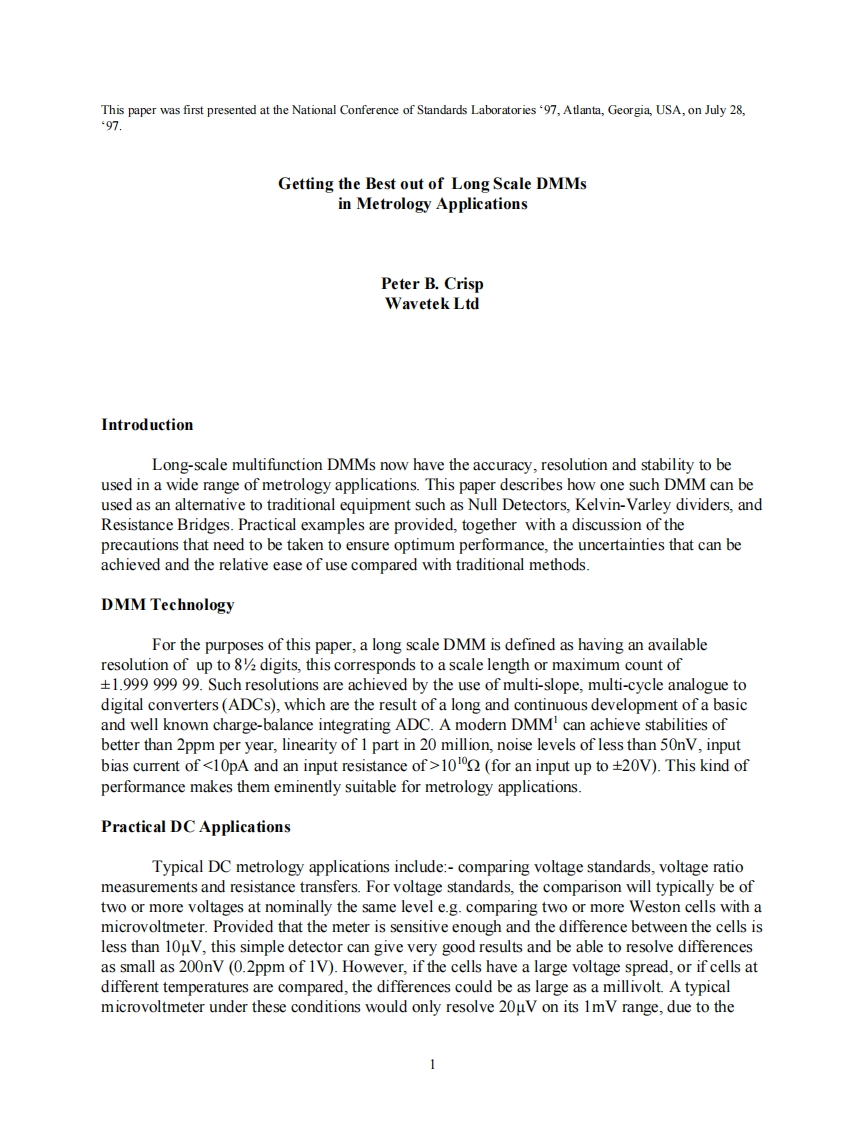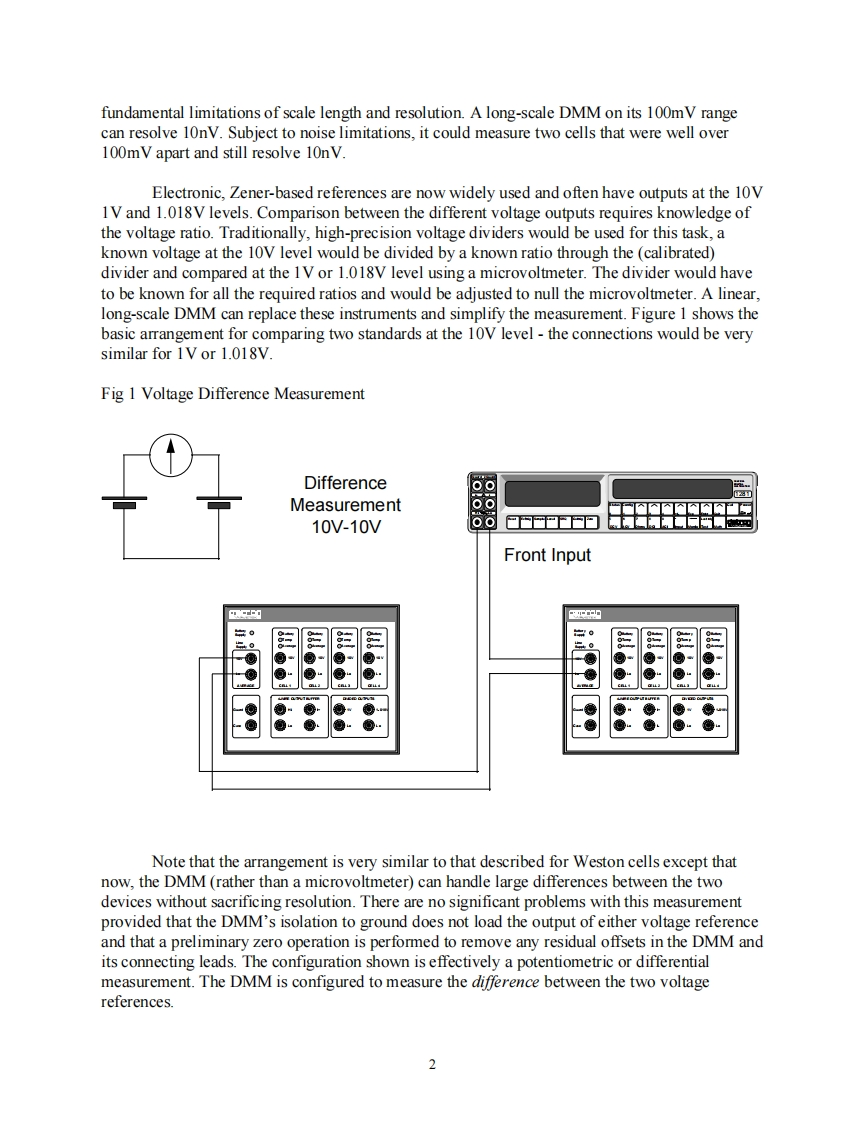

第1页 / 共11页

第2页 / 共11页
试读已结束,还剩9页,您可下载完整版后进行离线阅读
THE END
This paper was first presented at the National Conference of Standards Laboratories'97,Atlanta,Georgia,USA,on July 28,97.Getting the Best out of Long Scale DMMsin Metrology ApplicationsPeter B.CrispWavetek LtdIntroductionLong-scale multifunction DMMs now have the accuracy,resolution and stability to beused in a wide range of metrology applications.This paper describes how one such DMM can beused as an alternative to traditional equipment such as Null Detectors,Kelvin-Varley dividers,andResistance Bridges.Practical examples are provided,together with a discussion of theprecautions that need to be taken to ensure optimum performance,the uncertainties that can beachieved and the relative ease of use compared with traditional methods.DMM TechnologyFor the purposes of this paper,a long scale DMM is defined as having an availableresolution of up to 8 digits,this corresponds to a scale length or maximum count of+1.999 999 99.Such resolutions are achieved by the use of multi-slope,multi-cycle analogue todigital converters (ADCs),which are the result of a long and continuous development of a basicand well known charge-balance integrating ADC.A modern DMM'can achieve stabilities ofbetter than 2ppm per year,linearity of 1 part in 20 million,noise levels of less than 50nV,inputbias current of <10pA and an input resistance of >10 (for an input up to +20V).This kind ofperformance makes them eminently suitable for metrology applications.Practical DC ApplicationsTypical DC metrology applications include:-comparing voltage standards,voltage ratiomeasurements and resistance transfers.For voltage standards,the comparison will typically be oftwo or more voltages at nominally the same level e.g.comparing two or more Weston cells with amicrovoltmeter.Provided that the meter is sensitive enough and the difference between the cells isless than 10uV,this simple detector can give very good results and be able to resolve differencesas small as 200nV (0.2ppm of 1V).However,if the cells have a large voltage spread,or if cells atdifferent temperatures are compared,the differences could be as large as a millivolt.A typicalmicrovoltmeter under these conditions would only resolve 20uV on its 1mV range,due to the1



请登录后查看评论内容